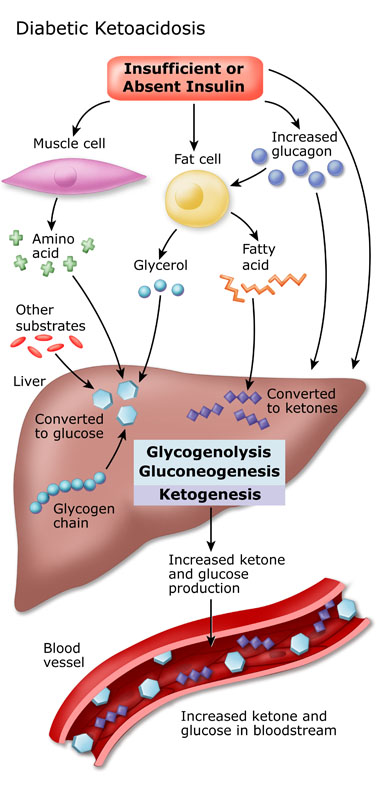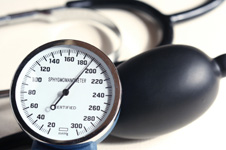Diabetic Ketoacidosis (DKA) – a condition brought on by inadequate insulin – is a life-threatening emergency usually affecting people with type 1 diabetes. Although less common, it also can happen when you have type 2 diabetes.
DKA is usually, but not always, signaled by high blood sugar levels. The important fact to remember is that without enough insulin, the body cannot burn glucose properly and fat comes out of fat cells. As a consequence the excess fat goes to the liver and glucose builds up in the bloodstream. The liver makes ketoacids (also known as ketones) out of the fat. Before long, the body is literally poisoning itself with excess glucose and ketoacids.
What causes DKA?
A lack of insulin usually due to:
- Unknown or newly diagnosed cases of type 1 diabetes
- Missed or inadequate doses of insulin, or spoiled insulin
- Infection
- Steroid medications
- An extremely stressful medical condition
DKA is rare in type 2 diabetes – but can develop if someone with type 2 diabetes gets another serious medical condition. Examples of medical conditions associated with DKA in type 2 diabetes are severe infections, acute pancreatitis (inflammation of the insulin producing organ, the pancreas), and treatment with steroids.
Symptoms of DKA include:
- Nausea, vomiting
- Stomach pain
- Fruity breath – the smell of ketoacids
- Frequent urination
- Excessive thirst
- Weakness, fatigue
- Speech problems, confusion or unconsciousness
- Heavy, deep breathing
How do you know if you have DKA?
Check your blood or urine for ketones. And if the test is positive, you will need immediate medical care. Treatment includes aggressive intravenous (IV) insulin and fluid replacement.
IF YOU HAVE DKA, GET TO A HOSPITAL IMMEDIATELY.

Self-assessment Quiz
Self assessment quizzes are available for topics covered in this website. To find out how much you have learned about Diabetes Complications, take our self assessment quiz when you have completed this section. The quiz is multiple choice. Please choose the single best answer to each question. At the end of the quiz, your score will display. If your score is over 70% correct, you are doing very well. If your score is less than 70%, you can return to this section and review the information.
